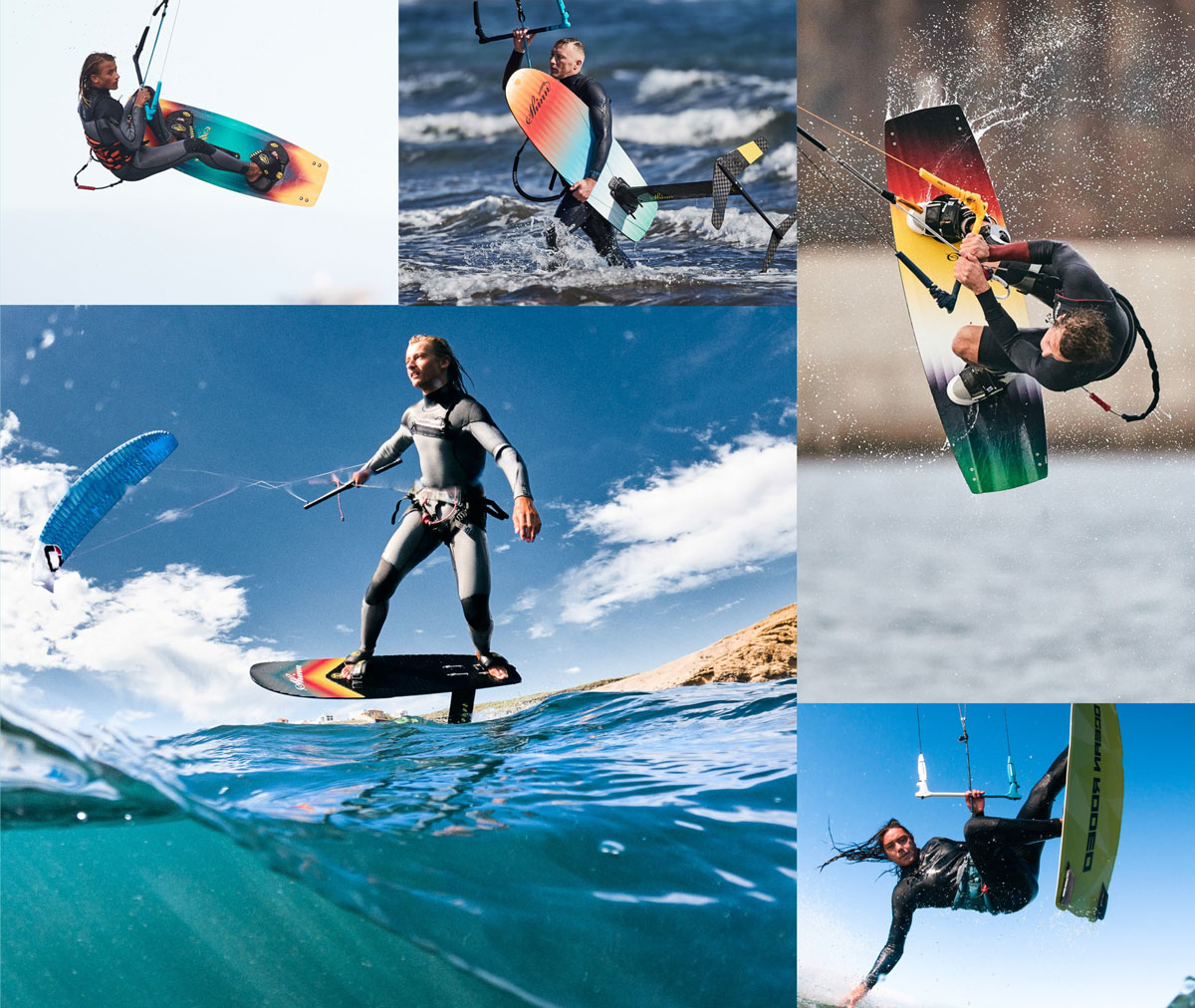The Rise of the Stand Up Paddle Board: Why South Africans Are Hooked on the Water
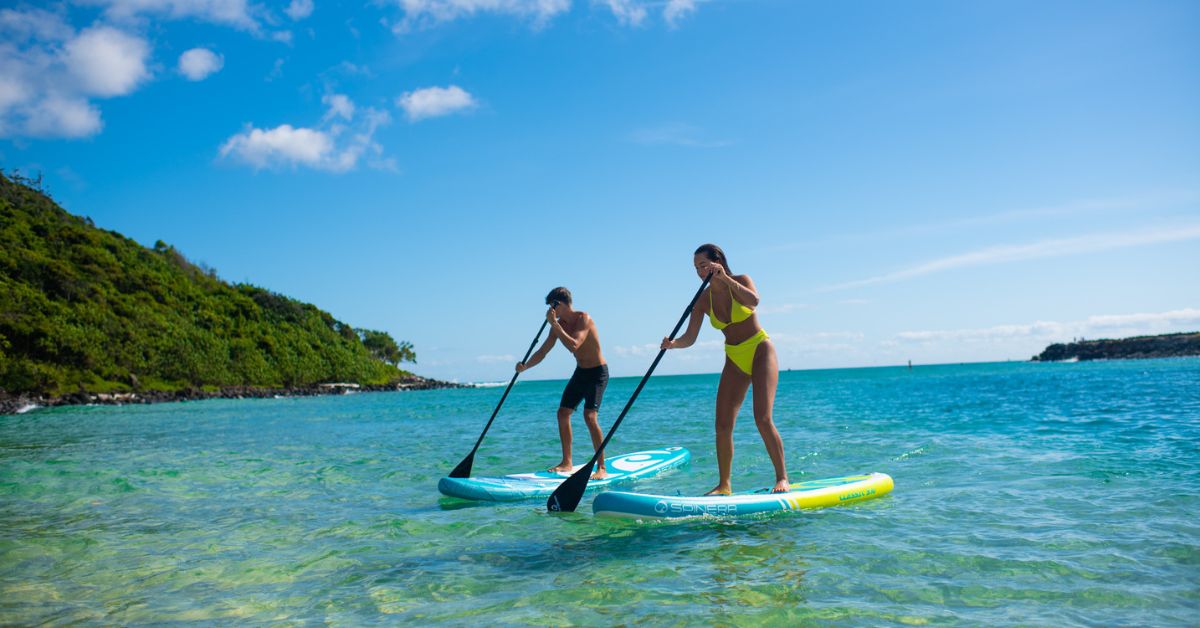
In case you didn’t know, there’s a new way to ride the waves that doesn’t involve a surfboard. The stand up paddle board has effortlessly made its way into the South African coastal scene, and suddenly, it’s everywhere. From Cape Town gliders soaking in the sunrise to river cruisers in the Eastern Cape’s wilderness, South Africans are standing tall on their boards and loving every second of it. Whether you’re chasing fitness, peace of mind, or a fun excuse to be on the water, this water-based adventure is on the rise.
Paddle Boarding in South Africa: Why It’s Making Waves
Here’s the kicker: cruising on the water may look and feel relaxing, but it’s more than that. It’s actually a full-body workout in disguise. While you’re gliding along smooth shores and soaking in the views, your core is engaging, your balance is improving, and your arms and legs are toning up without you even realising it. On top of that, the experience offers a mental refresh, a moving meditation, and a healthy boost of vitamin D. What more could your mind and body want?
The Feel-Good Benefits of Paddle Boarding
Some of the feel-good benefits of the stand up paddle board include:
- Balance and Coordination Boost: Improved stability and posture while surrounded by peaceful, natural landscapes.
- Full-Body Workout: Naturally engage your core, arms, legs, and back without needing a gym.
- Mental Health Magic: Lower stress, calm your nervous system, and stay present as you cruise on your stand up paddle board.
- Nature Connection: Spend more time outdoors, reconnect with the wild, and observe ocean life.
- Low Impact, High Reward: Gentle on joints but great for cardio and muscle tone.
- Sunshine Therapy: Soak up vitamin D while you glide—the ultimate tonic for mood, health, and energy.
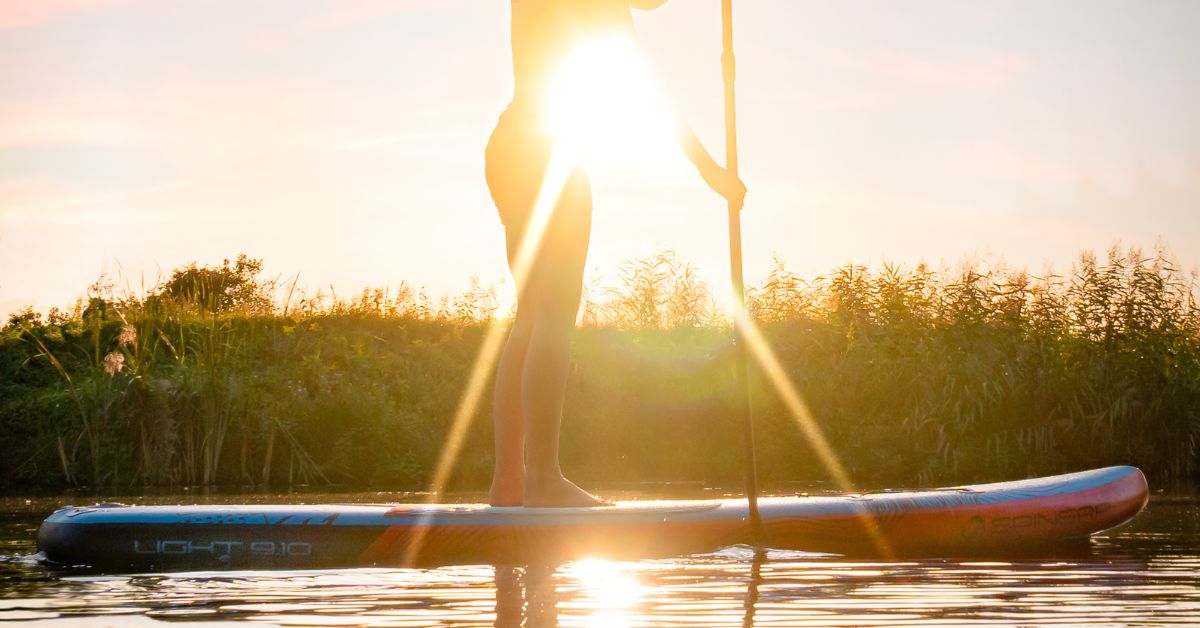
How to Do Stand Up Paddle Boarding
Once you’ve got your board and found the water, it’s time to stand up. Whether you’re a beginner or just need a confidence boost, here’s how to paddle without an unexpected swim.
The Basics: How to Stand Up Paddle Board for Beginners
The good news is that paddling is much easier than it looks. With a bit of balance and the right technique, even first-timers can feel confident from their first session.
How to stand up paddle board successfully:
- Start on your knees: Get comfortable with the stand up paddle board and paddle.
- Find your balance: Place your hands flat on the board and bring one foot forward at a time.
- Stand slowly: Rise using your legs, similar to a squat.
- Keep your eyes on the horizon: Looking down can cause wobbling, so stay focused ahead.
- Feet shoulder-width apart: Keep your knees soft and your stance relaxed.
Feeling a bit shaky? That’s all part of the experience. Many South Africans prefer calm dams or lagoons to start before heading into the ocean.
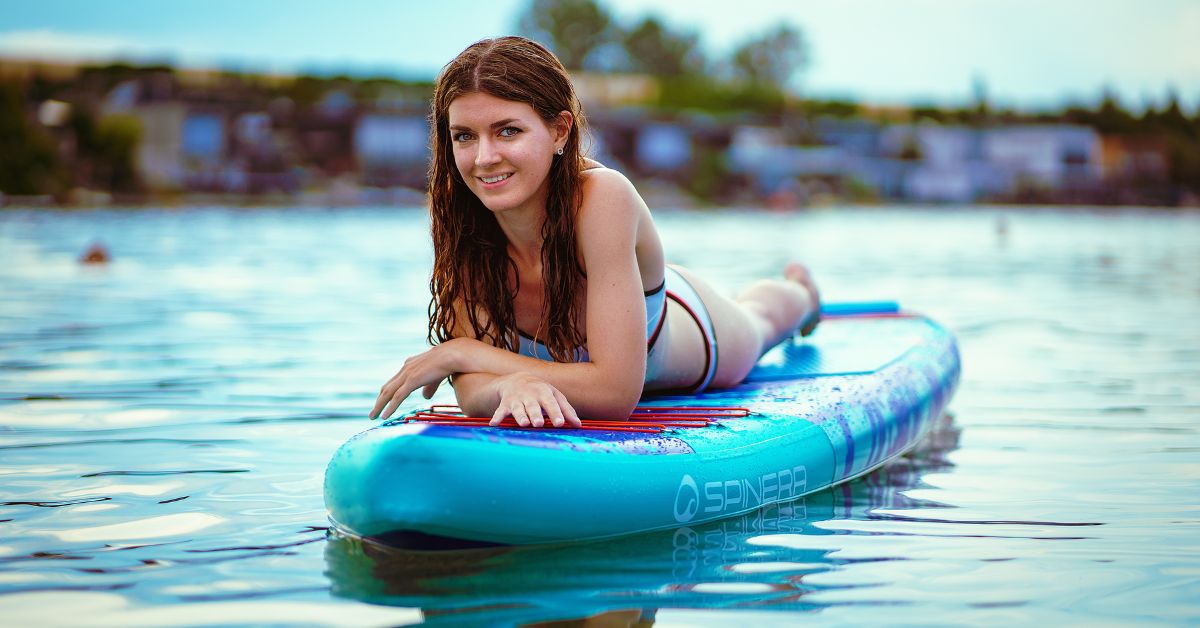
Paddle Like a Pro: Technique Tips and Tricks
Once you’re up and steady on your stand up paddle board, it’s time to learn how to paddle efficiently:
- Hold the paddle properly: One hand on the top (the T-grip), one on the shaft. The blade should angle away from you.
- Use your core: Rotate your torso instead of relying on your arms to avoid fatigue.
- Switch sides regularly: Swap sides every few strokes to paddle straight.
- Stay relaxed: Tension leads to wobbles, so breathe, bend your knees, and go with the flow.
Once mastered, the rhythm of the stand up paddle board becomes grounding and meditative. You’ll wonder how you lived without it.
Finding Your Perfect SUP: Choosing the Right Stand Up Paddle Board
With so many shapes, sizes, and styles available, choosing the right stand up paddle board can feel overwhelming—but don’t worry. The perfect board is out there waiting for you.
What Size Stand Up Paddle Board Should I Buy?
Size matters when choosing the right stand up paddle board. The ideal board should feel stable underfoot, glide smoothly, and match your weight and skill level.
- Beginners should opt for wider, longer boards for increased stability.
- Kids and lighter paddlers can go for shorter boards that are easier to handle.
- Heavier riders should look for higher volume boards that float better and stay straight.
If you’re looking for a stand up paddle board for sale Cape Town has some great options. Shops like Ocean Trade Supplies stock beginner-friendly boards with clear gear descriptions to help you choose.
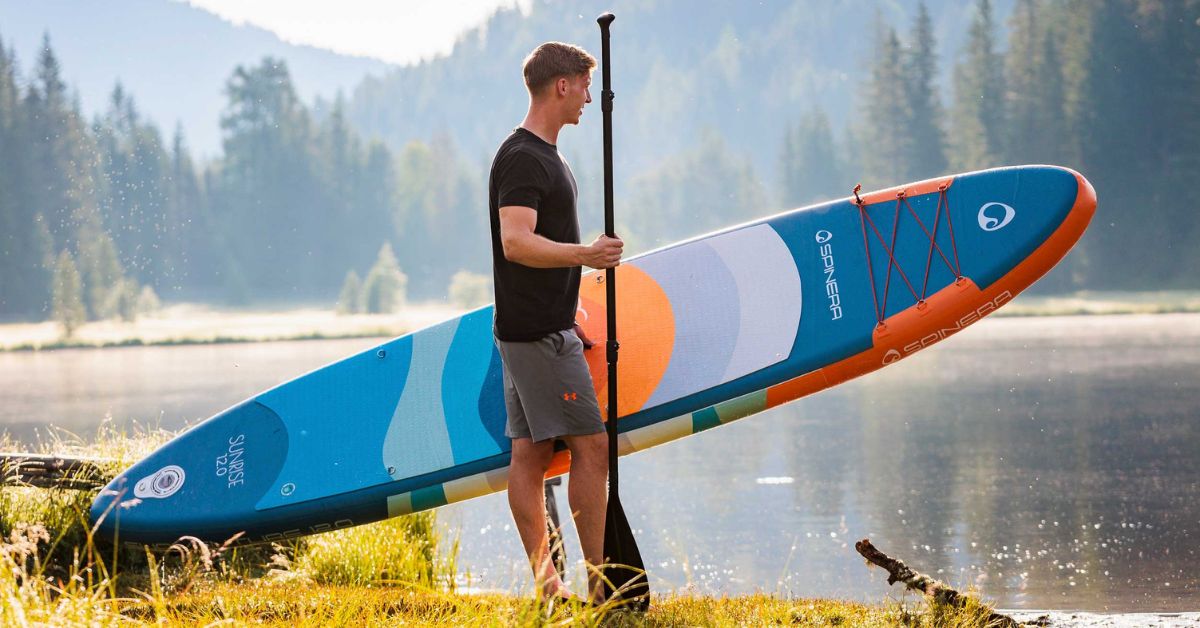
Inflatable vs Hard Boards: What’s Right for You?
It’s the classic debate: inflatable stand up paddle board or hard board? Here’s how to choose:
Inflatable Stand Up Paddle Board
- Super Portable: Packs down into a backpack and fits in most car boots.
- Great for Travel: Perfect for road trips, van life, and holidays.
- Softer Surface: Easier falls, ideal for kids or SUP yoga sessions.
- Durable: Surprisingly rigid and rugged when inflated properly.
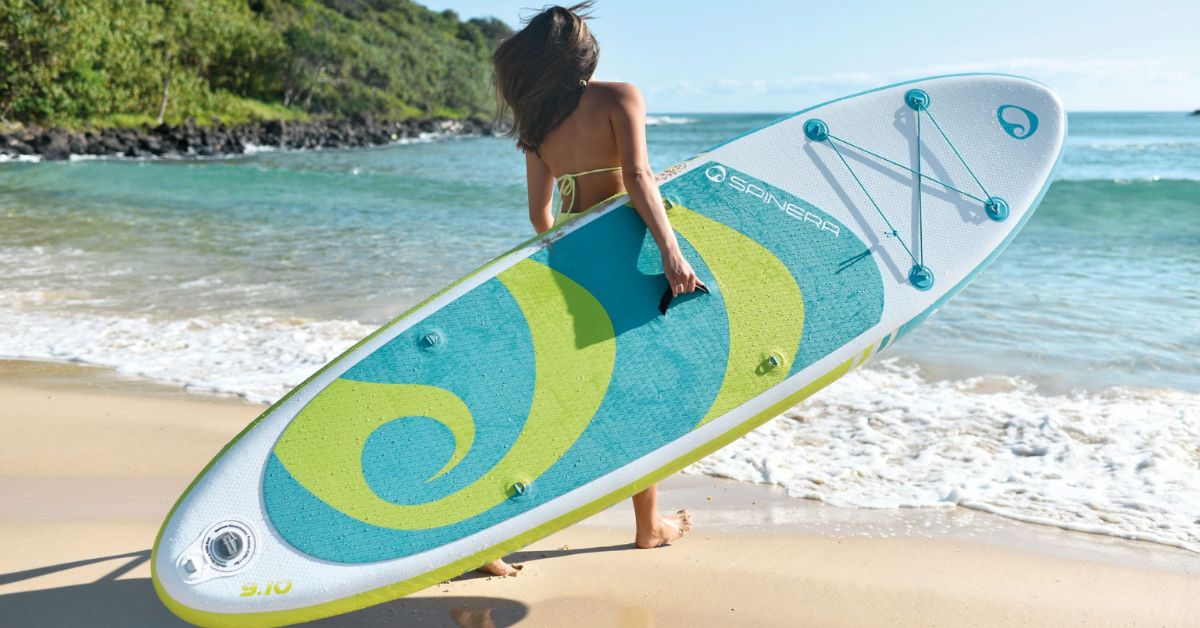
Hard Boards (Epoxy/Fibreglass)
- Better Performance: Slightly faster and more durable.
- Preferred by Pros: Ideal for surfing or long-distance touring.
- More Maintenance: Needs roof racks and careful storage.
If convenience and adventure are your priority, an inflatable stand up paddle board might be your best bet. Ocean Trade Supplies offers reliable inflatable boards that won’t break the bank.
FAQs: Paddle Boarding for Curious South Africans
Still have questions? We’ve got answers. Whether you’re new to paddle boarding or ready to upgrade, here’s what you need to know:
Where are the best spots to paddle board in South Africa?
Some of the top locations include Knysna Lagoon, Camps Bay (on calm days), the Vaal River, Zandevlei Estuary, and St Francis Bay.
Is paddle boarding safe for children?
Absolutely, as long as they’re supervised and wear proper safety gear. Shallow, calm waters are best for beginners, and a life jacket is essential.
Do I need extra paddle boarding equipment?
Besides your stand up paddle board and paddle, you may want:
- A leash to stay connected to your board
- A personal flotation device (PFD), especially for kids or deeper waters
- Dry bags or waterproof pouches for phones and snacks
- A pump, if you choose an inflatable stand up paddle board
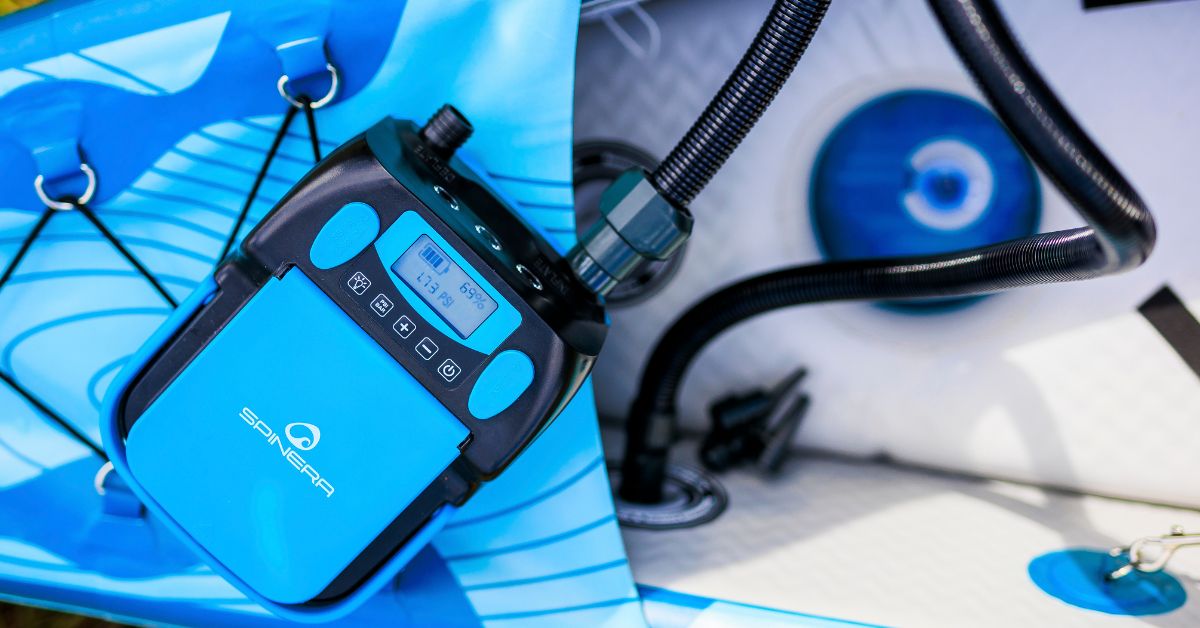
What is the standard stand up paddle board price?
A good quality board typically costs between R8000 and R18000. It’s a solid investment for years of adventure.
Ready to Paddle Into Your Next Adventure?
Whether you’re after calm or cardio, this is your gateway to freedom on the water.
Explore the full range of board options and gear at Ocean Trade Supplies and get out there—one paddle stroke at a time.



